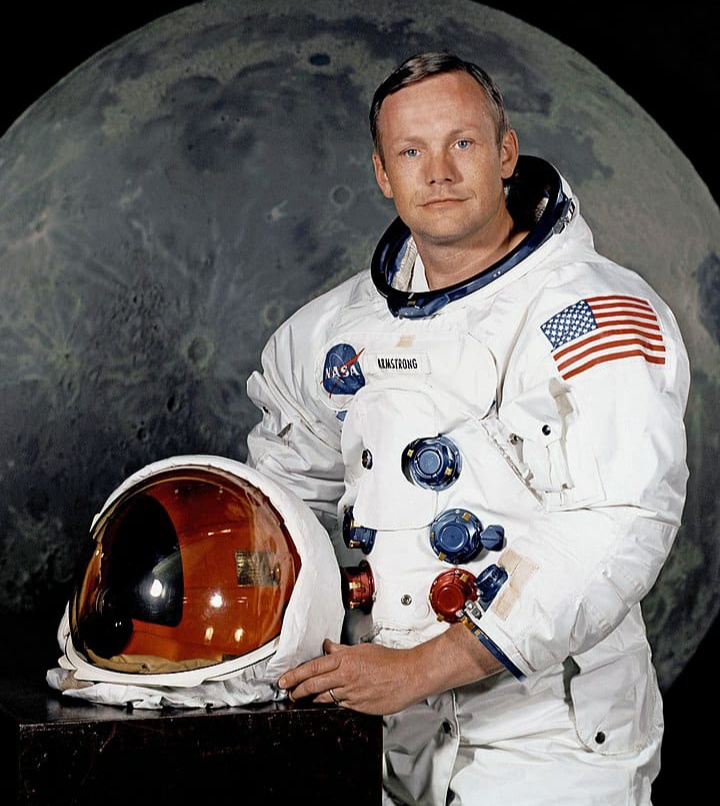Neil Armstrong: The First Man on the Moon and His Journey Beyond
Nihar Ranjan Acharya
Ph.8249775817
E-mail: nihar.acharya1973@gmail.com
Neil Armstrong, a name synonymous with exploration and courage, holds a unique place in history as the first person to set foot on the Moon. Born on August 5, 1930, in Wapakoneta, Ohio, Armstrong’s journey from a small-town boy with a fascination for aviation to becoming a global icon is a story of dedication, humility, and an unyielding pursuit of knowledge.
Early Life and Passion for Aviation
Armstrong’s interest in flying began at a young age. By the time he was six, he had already taken his first airplane ride, sparking a lifelong passion. This early exposure led him to earn his pilot’s license before he even obtained his driver’s license. His love for aviation drove him to pursue a degree in aeronautical engineering from Purdue University, where he was accepted on a U.S. Navy scholarship.
During the Korean War, Armstrong served as a naval aviator, flying 78 combat missions. His experience in the military honed his skills and gave him a profound understanding of the complexities of flight, which would later be invaluable in his career as an astronaut.
NASA and the Space Race
After the war, Armstrong continued his education and later joined the National Advisory Committee for Aeronautics (NACA), which eventually became NASA. As a test pilot, Armstrong flew some of the most advanced aircraft of the time, including the X-15 rocket plane. His work as a test pilot was marked by a calm demeanor and a meticulous approach to problem-solving, qualities that made him an ideal candidate for the astronaut program.
In 1962, Armstrong was selected as part of NASA’s second group of astronauts. This was during the height of the Cold War, and the United States was in a fierce competition with the Soviet Union to achieve superiority in space exploration. The Soviet Union had already launched the first human, Yuri Gagarin, into space in 1961, intensifying the pressure on NASA to deliver a significant achievement.
Apollo 11: The Historic Mission
The culmination of the space race came with the Apollo 11 mission. On July 16, 1969, Armstrong, along with fellow astronauts Buzz Aldrin and Michael Collins, launched from Kennedy Space Center in Florida aboard the Saturn V rocket. Their destination was the Moon, a goal set by President John F. Kennedy in 1961 when he declared that the United States would land a man on the Moon before the end of the decade.
The journey was fraught with challenges, but Armstrong’s calm and composed leadership proved vital. On July 20, 1969, the Lunar Module, nicknamed “Eagle,” touched down on the Moon’s surface. As Armstrong descended the ladder, he uttered the now-iconic words, “That’s one small step for man, one giant leap for mankind.” These words resonated across the world, symbolizing a monumental achievement not just for America, but for humanity as a whole.
Armstrong spent about two and a half hours on the Moon, collecting samples, conducting experiments, and taking photographs. His calm demeanor under pressure, particularly during the critical moments of the landing when fuel was running low, exemplified his extraordinary ability to manage stress in high-stakes situations.
Life After the Moon Landing
After returning to Earth, Armstrong was thrust into the global spotlight. However, unlike many public figures, he chose a path of privacy and humility. He resigned from NASA in 1971 and accepted a teaching position at the University of Cincinnati, where he taught aerospace engineering. Armstrong valued education and believed in passing on knowledge to the next generation, shaping the minds of future engineers and astronauts.
Throughout his life, Armstrong remained modest about his accomplishments. He often downplayed his role in the Moon landing, emphasizing that it was a team effort involving thousands of people. His humility and reluctance to embrace the celebrity status that came with his achievement only added to his mystique.
Legacy and Impact
Neil Armstrong passed away on August 25, 2012, but his legacy endures. His journey to the Moon is a testament to human ingenuity, perseverance, and the unrelenting quest to explore the unknown. Armstrong’s name will forever be etched in history as the pioneer who led humanity’s first steps on another celestial body.
Armstrong’s life serves as an inspiration to all who dare to dream and push the boundaries of what is possible. His achievements remind us that with determination, teamwork, and a commitment to excellence, we can overcome even the most daunting challenges. As we look to the future of space exploration, Neil Armstrong’s spirit of exploration continues to guide us, encouraging new generations to reach for the stars.
© Nihar Ranjan Acharya


